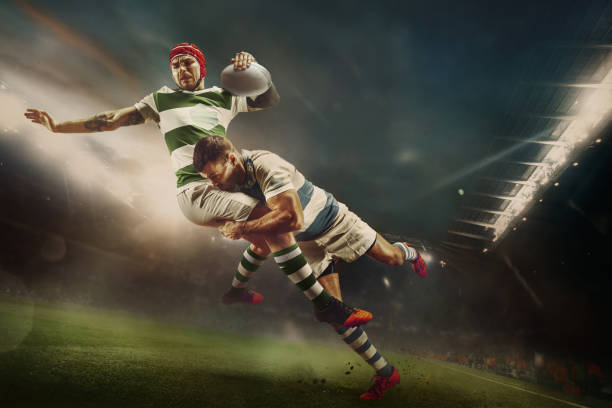Have you ever wondered why some rugby players wear soft helmets, also known as scrum caps?
Well, such headgear is for protecting the players rather than serving as an accessory. Rugby is a fast and rough game, and players need all the protection they can get.
In this blog, we will explain rugby scrum caps, why players use them, and how they help keep everyone safe.
We will also discuss in great detail the pros and cons of wearing a scrum cap and whether they work.
By the end of this blog, you will come to know just how seriously important safety gear like rugby scrum caps are, and what future these protecting helmets hold.
What are Rugby Scrum Caps?
Rugby scrum caps are lightweight helmets for protecting the heads of players during rugby play.
Unlike their American football counterparts, the scrum caps applied in Rugby are manufactured using soft materials like foam.
These caps protect against head injuries, such as cuts, bruises, and damaged ears, during full-contact activity.
While not as thick or heavy as other helmets, rugby helmets provide some absorption when rugby players knock heads, hit the ground, or get tackled.
Many rugby players wear them for extra protection.
Why Do Rugby Players Wear a Scrum Cap?
Rugby is complex and rugged; players continuously run, hit, scramble, and fall over each other.
It is not unusual for them to bump their heads into each other and plunge onto the ground with great force.
In such cases, scrum caps protect their heads from the worst impacts.
Here’s How Rugby Scrum Caps Help:
- Head protection: Scrum caps offer different levels of cushioning during head impacts from falling players, for example.
- Ear Protection: The major reason players wear scrum caps is to protect the ears. Rugby players develop “cauliflower ear,” a condition where the ear is swollen and misshapen after repeated hits. Scrum caps prevent this painful condition.
- Confidence Builder: Some say that a scrum cap gives them more confidence playing because they feel safe, even on the head.
The Problem of Cauliflower Ear
Have you ever noticed that a few rugby players have ears that are swollen, lumpy, and almost shaped like a piece of cauliflower?
It is called the “cauliflower ear,” and it happens when a player’s ear gets hit repeatedly. Eventually, the ear fills up with blood and hardens.
These scrum caps help avoid cauliflower ears because they cover the ears, saving them should your opponent hit you in the head during a game.
Excruciatingly painful at times, cauliflower ears are not just bizarre-looking; they may also cause hearing problems.
While rugby scrum caps are mainly for head protection, they also protect ears from possible mishaps.
Do Scrum Caps Really Work in Rugby?

Many people need clarification on whether the rugby scrum caps even work for the purpose intended.
Do they eliminate concussions and serious overall injuries? Well, the answer is yes and no.
Cuts and Bruises
Scrum caps are effective in reducing cuts and bruises on the head.
If a player falls to the ground or strikes another player with their head, the scrum cap cushions the impact.
The fact that a scrum cap is worn minimizes the chances of acquiring what is referred to as ‘cauliflower ear,’ something which is quite a big deal among rugby players.
Mild Concussions
Scrum caps are less effective in preventing concussions.
While they offer some protection, they cannot completely stop the forces likely to cause concussions.
In this respect, rugby players need to play wiser and follow rules for their safety to avoid such injuries.
The Pros and Cons of Rugby Scrum Caps
Scum caps for Rugby will help, but they are not faultless. Let’s take a look at the pros and cons of wearing a scrum cap:
PROS:
- Cuts and bruises can be protected from the elements.
- It helps prevent cauliflower ear.
- Provides a little extra confidence on the field.
- Soft and lightweight, it does not interfere with playing.
CONS:
- This may create a very false sense of security among gamers
- Does not fully guard against concussion
- Hot and uncomfortable to wear after extended gaming sessions
- Some of them even believe that it bothers their clear vision.
Who Wears Rugby Scrum Caps?

Rugby scrum caps are worn by players of all positions on the field, from the front row to the back line.
Some famous players who have worn scrum caps include Dan Carter and Richie McCaw.
For many players, it comes down to personal preference.
Scrum caps are most common among forwards, the players who most frequently involve themselves in scrums and tackles.
These players receive the most physical contact, so this is protection for parts of their heads and ears.
Rugby Safety: It’s More Than Scrummaging Caps
Scrum caps are just a part of staying safe in Rugby.
To protect yourself accordingly, here are more vital precautions:
- Proper Tackling Technique: The best way to avoid a head injury is to learn how to tackle it correctly.
- With rules in place: World Rugby is the governing body that oversees Rugby. It has instituted some regulations to make Rugby a much safer sport for all participants. Rule changes are enacted from time to time to lower the risk of injury even further.
- Concussion protocols: If a rugby team member suffers an insult to the head, there are strict rules concerning their return to the game.
Other protection equipment involves items like mouthguards and all forms of padding for the body.
Scrum Hats: How it Works
Scrum caps work in Rugby by dissipating the force of the impact on the head.
When a player is hit, the scrum cap absorbs some of the energy from that particular blow, thereby minimizing the chances of cuts or bruises.
They are made from materials like foam that can compress and bounce back, therefore offering some protection.
However, scrum caps cannot avoid or prevent all injuries, especially concussions.
Even wearing a scrum cap, players will feel the forces whenever they receive a hard tackle or collision.
Conclusion
Should You Wear a Rugby Scrum Cap? Whether or not to wear a rugby scrum cap is a matter of personal choice.
They do offer some protection against injury and fairly well prevent things like cauliflower ear, yet they are by no means perfect.
If you are in a position that involves much physical contact, you should wear one for added protection.
Yet again, rugby scrum caps do not replace safe playing techniques and adherence to the game’s rules.
The best protection on the rugby field is to stay bright and play safe.
If you found this blog helpful, explore more of our related content for additional insights and information on similar topics.
Check out our in-depth blog on Rugby Player Cauliflower Ear to learn more about how rugby players protect their ears from injuries and how cauliflower ear affects those who play contact sports.